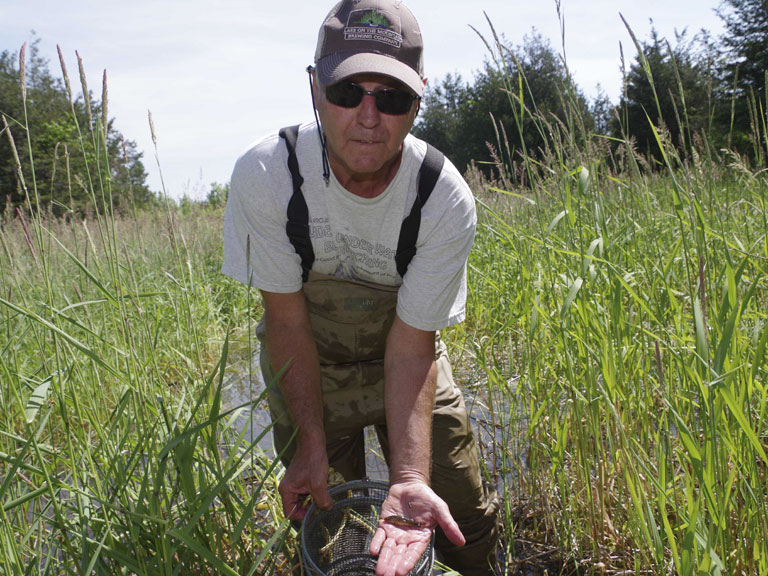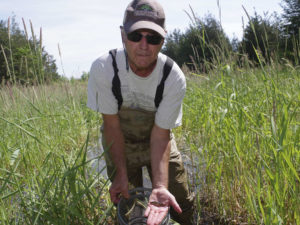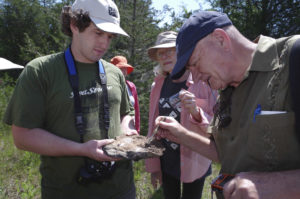County News
Flora and fauna

Species inventory contributes to Canada’s “nature selfie”
For a 24-hour period this past weekend, nature specialists accompanied by citizen scientists counted species of flora and fauna at the Miller Family Nature Reserve on the County’s south shore. Starting at noon on Saturday and extending to noon on Sunday, nature enthusiasts took an inventory of the living organisms on the reserve as part of a nation-wide BioBlitz campaign.
This type of campaign started many years ago and originally involved only specialists, but it soon became apparent that participation by the broader community— including amateur naturalists as well as families—was beneficial.
This is the fourth year the event has been held in the County. Previous locations for a species inventory were Ostrander Point, Point Petre and Little Bluff Conservation Area.

Stream ecologist Les Stansfield holds a mud minnow, found in a cold water pond on the Miller Family Nature Reserve.
This year, the Miller Family Nature Reserve was chosen due to its location along the South Bay coastal wetland, as well as for its status as an important bird area (IBA).
“We are trying to document the biodiversity of the south shore in Prince Edward County,” says Sheila Kuja, one of the organizers of the bioblitz. “This is a way of making it a fun event where we gather experts in different fields to put together a record of all the plants and animals that have been seen in that 24 hours. It isn’t all-inclusive, but it gives you and idea of what’s here.”
The events included dragonfly and butterfly identification, natural history walks, exploration of pond life, morning and evening bird identification walks, as well as a moth study. Each of these events were led by experts, providing excellent opportunities for individuals and families to learn more about nature and the environment we live in.
In addition, Dick Bird of the Hastings Prince Edward Land Trust, which manages the Reserve, was giving away bluebird boxes to participants of the BioBlitz. He was pleased to have the community involvement. “This is exactly what we want to happen. This is what the land is for,” he said.

Matt Christie (L), who studied entomology at university, shows a black widow spider specimen to tour leader Paul Catling (R). Gerry Jenkison (centre) looks on from a safe distance away.
Although the results have not been tabulated yet, there is preliminary indication of at least one rare moth species and two types of fish found in cold water ponds on the Reserve. It is these cold water ponds that most intrigued stream ecologist Les Stansfield. “This is the coolest finding in the BioBlitz,” he said. He had noticed watercress growing along the roadside ditches, and knew immediately that groundwater must be welling upwards, as that plant can only grow in moving water. He soon found what he knew must exist—a substantial cold water pond fed by upwelling through seeps in the limestone, indicative of a karst geologic formation. These types of ponds are the preferred habitat of Blanding’s turtles and can potentially be destroyed by industrial activities that disrupt the subsurface water flows.
A final report on the results of the BioBlitz will be issued later in the year. It will contain photographs and a description of the area together with a list of all the species in taxonomic order, and will be distributed to County schools and libraries as well as to governmental agencies.

Comments (0)